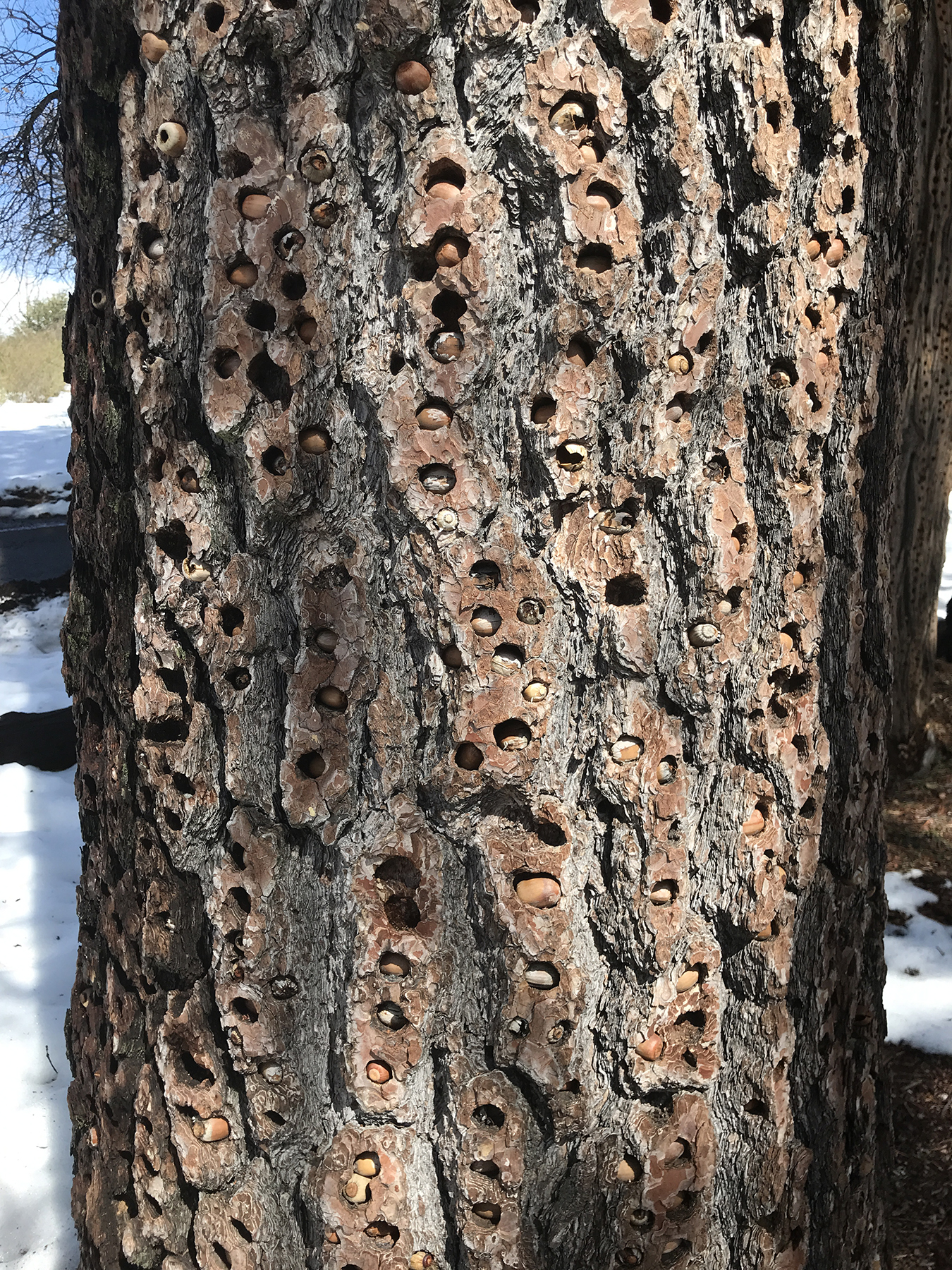A remarkable thing about birding in southern California is how quickly you can be in completely different habitats. After 2 1/2 days in San Diego, we literally left the beach and just one hour later found ourselves in the Laguna Mountains, hoping to find some higher altitude species. We stayed overnight in a town called Pine Mountain (3,700 ft elevation) and woke up the following morning to a light fog that unfortunately became more dense as we drove up to higher altitudes, forcing a change in plans. The fog was likely due to the unseasonable snowstorm that they received the previous week, coating the ground outside of town in 6 inches of snow and resulting in some road closures in one of our destinations, Cuyamaca Rancho State Park.
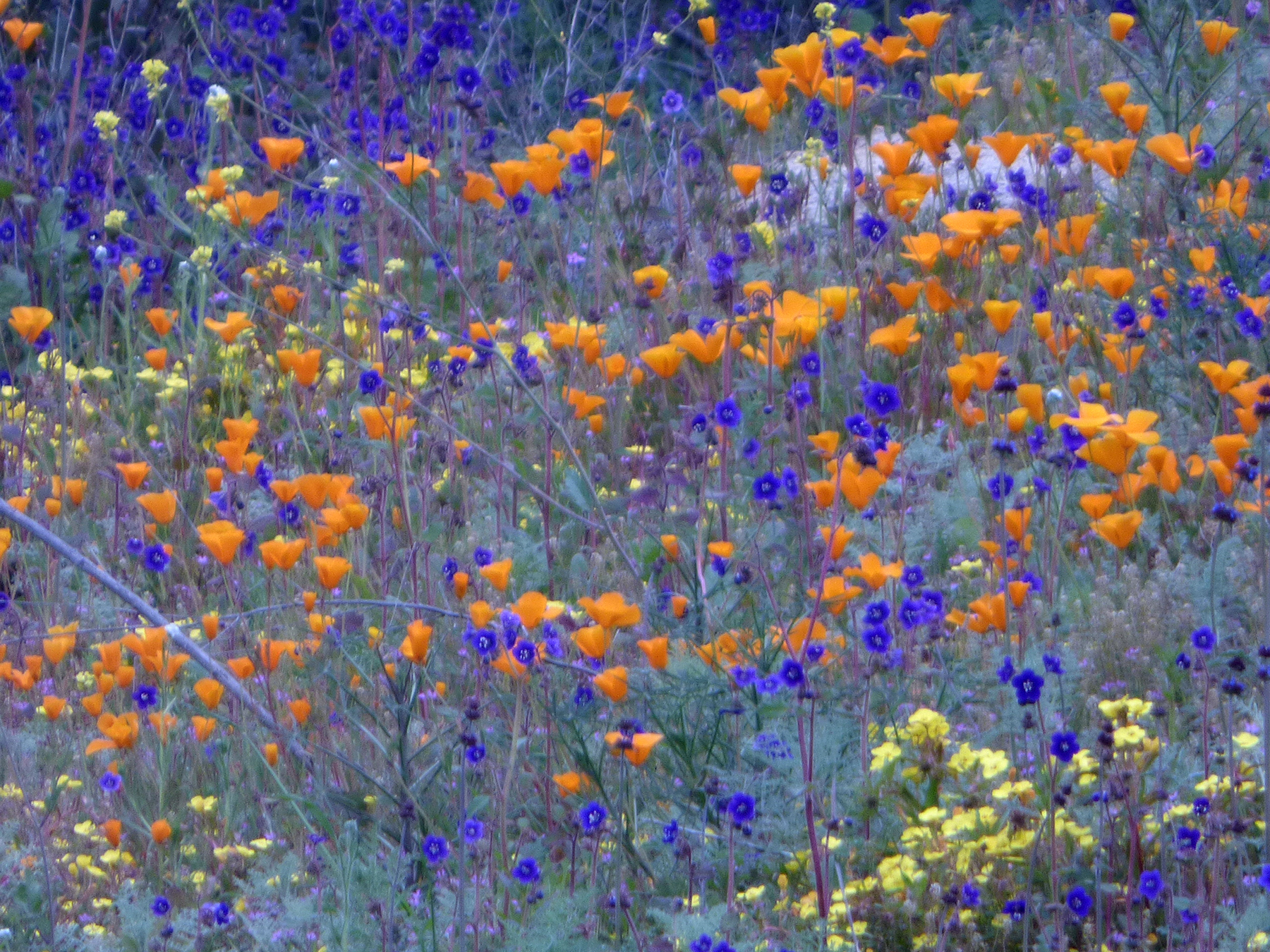
Wildflowers were blooming in colorful clusters in the foothills outside of San Diego. Photo by Jeanine Apgar.
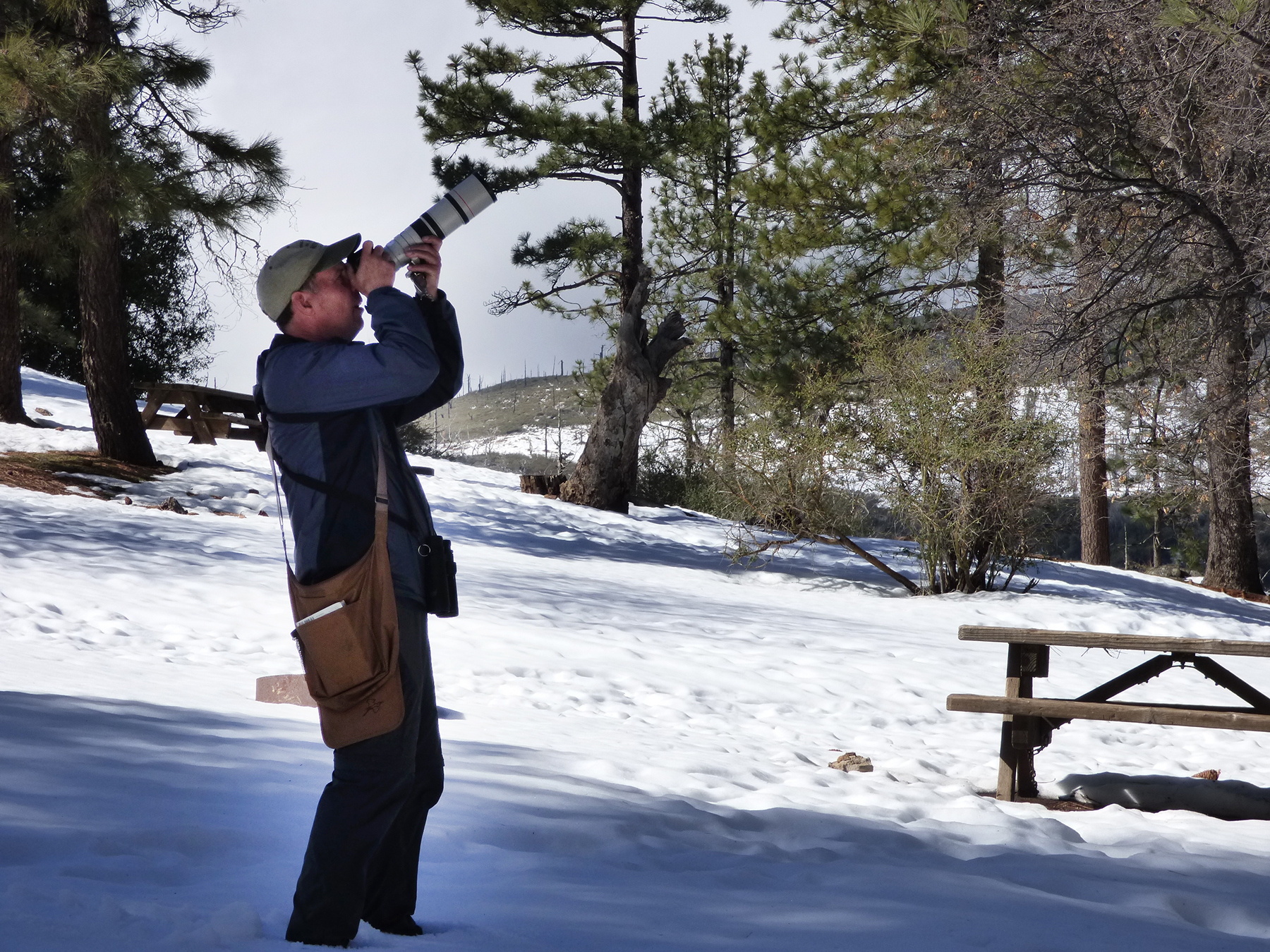
Just an hour drive eastward after we were strolling barefoot on the beach we were in mountain habitat with 4-6 inches of snow. Photo by Jeanine Apgar.
We made the best of the situation, and ultimately found most of our expected targets. In the town park we found our first Acorn Woodpeckers of the trip, and being a sociable species, a single oak hosted nearly a dozen of these distinctive birds. Dark-eyed Juncos were feeding on the ground, but for a nice change they were of the Oregon race, unlike the Slate-colored sub-species that we left behind in New Jersey. Groups of Band-tailed Pigeons flew above the pines, and a Bewick’s Wren and Steller’s Jay joined the group.
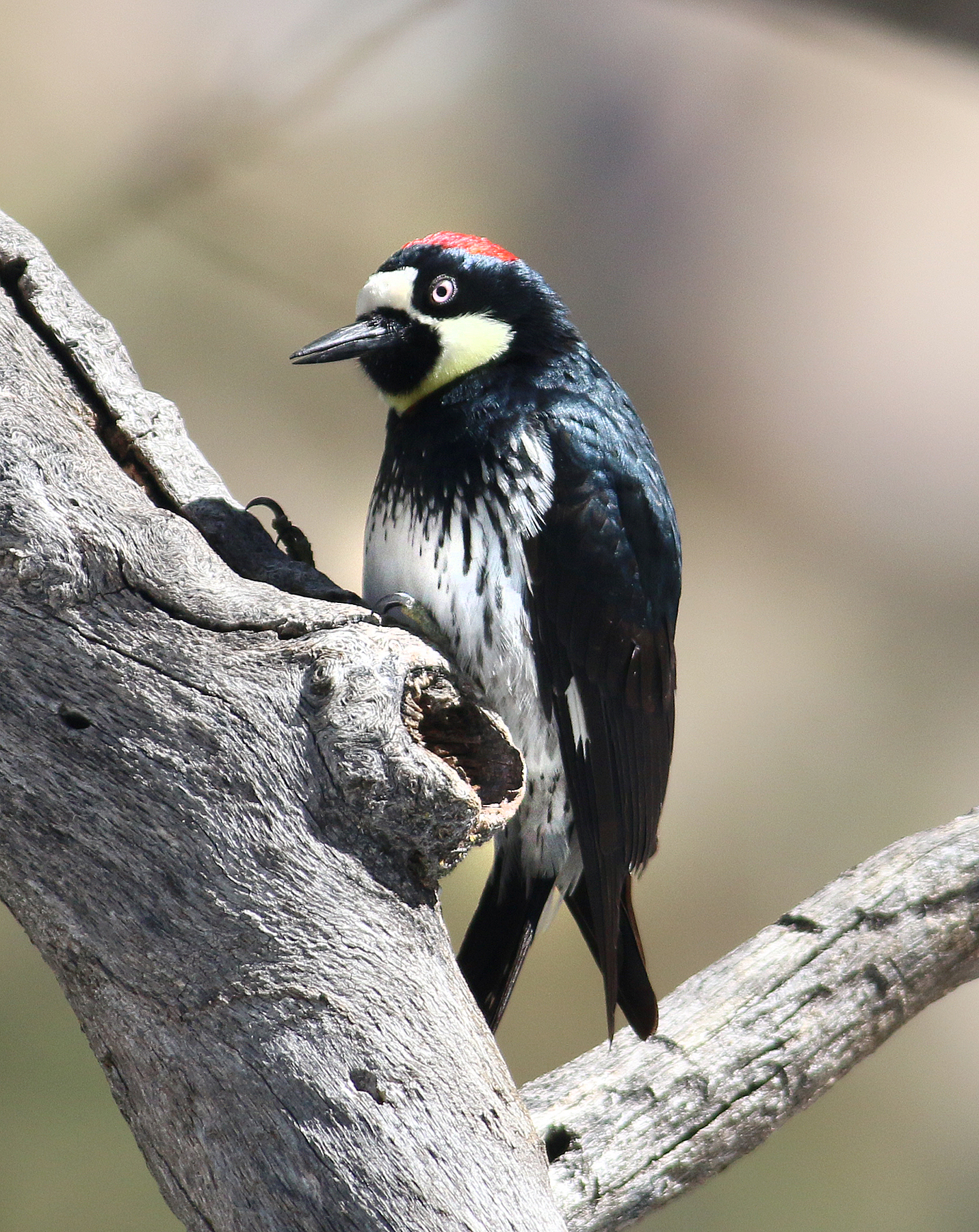
Acorn Woodpeckers were found in several types of habitats, and when you found one, you were sure to find more. They are very sociable.

The Oregon sub-species of junco was a slightly more colorful change from our eastern Slate-colored Juncos.
In Cuyamaca Rancho Park the trails were difficult to walk due to the snowcover, so we focused on the cleared roads in Paso Picacho Campground (5,000 ft). The Ponderosa Pines here were FILLED with Acorn Woodpeckers and their acorn stashes, but we had other birds in mind. We started with a brilliant Red-breasted Sapsucker, and then started finding species that replace our familiar eastern mixed-flock birds. In southern NJ we have Yellow-shafted Flicker, Carolina Chickadees, Tufted Titmouse, and White-breasted Nuthatch, but up here they were replaced with Red-shafted Flicker, Mountain Chickadees, Oak Titmouse, and Pygmy Nuthatch. (to be more accurate, both White-breasted and Pygmy Nuthatches were present, so it wasn’t a true nuthatch ‘replacement’).
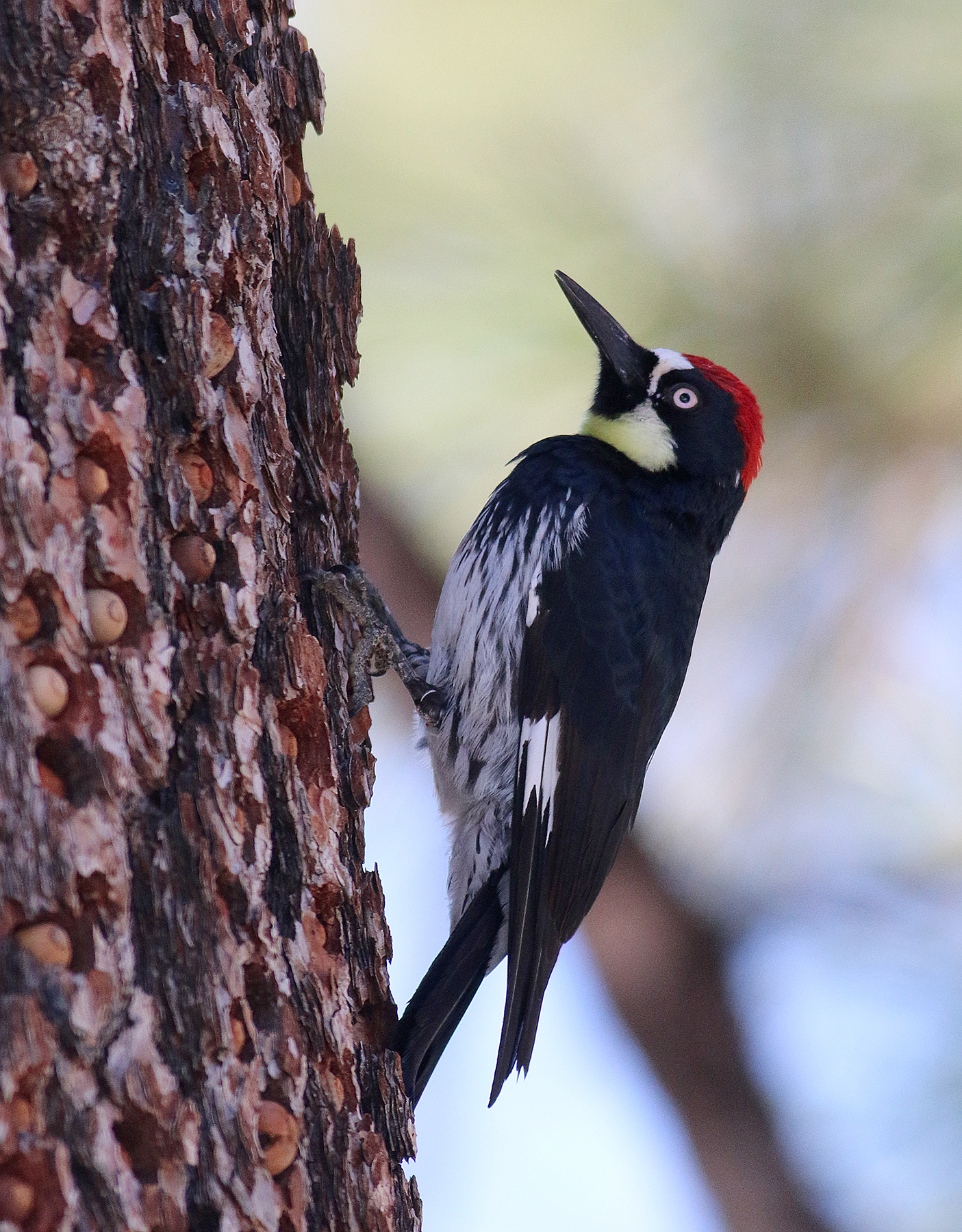
The Acorn Woodpeckers stash acorns in the Ponderosa Pine bark, as can be seen here. Some of the Ponderosas were just filled with acorns.

Oak Titmouse was seen in the mountains, desert, and foothills, but our first one was found in the higher altitude of Rancho Cuyamaca.
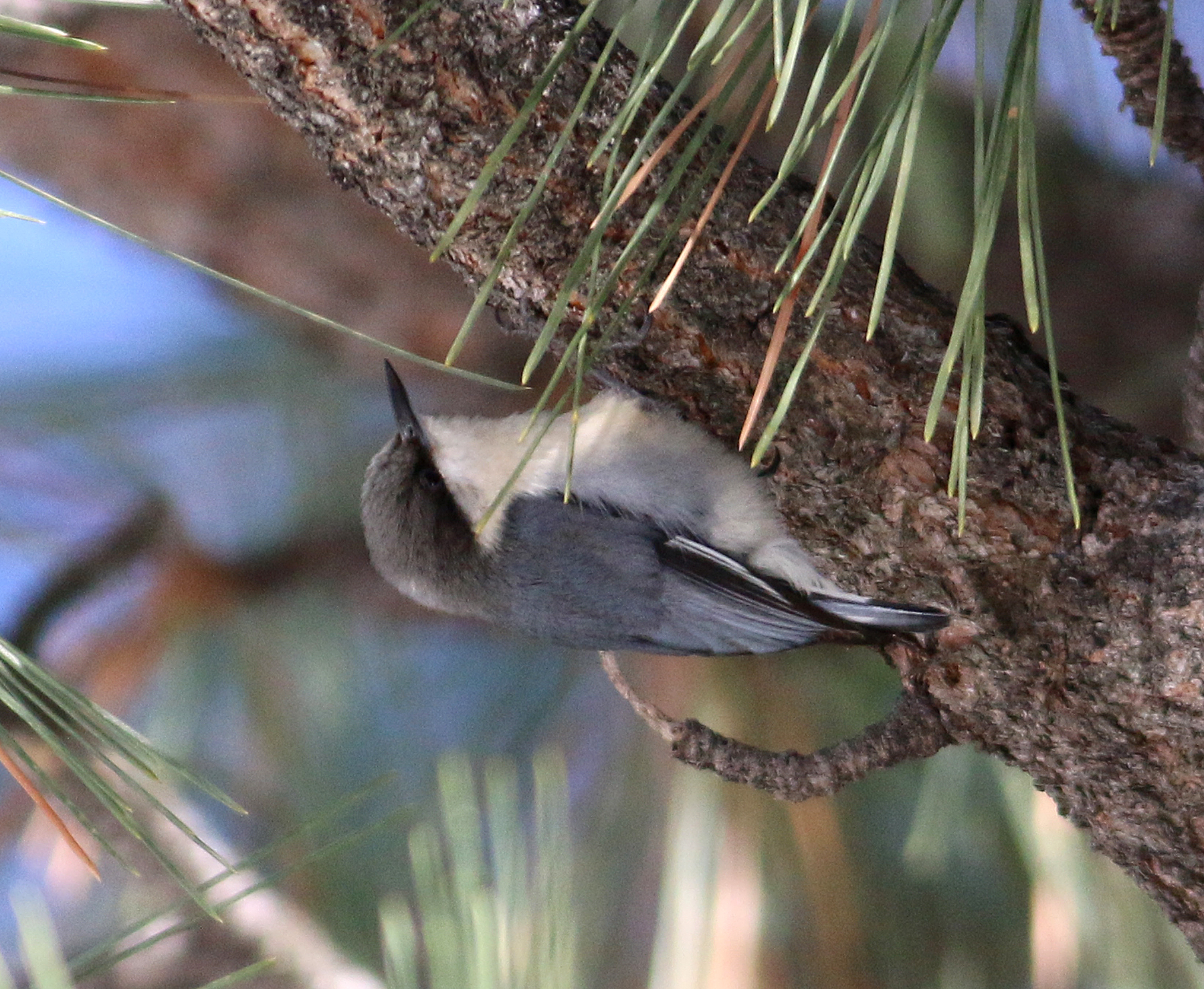
We struggled to find Pygmy Nuthatch, but when we did find them, they were in a group of about six birds working a single pine.
Driving downhill from Cuyamaca Rancho towards the desert we spied our first Phainopepla of the trip. Upon arrival in Borrego Springs we took a break in the desert warmth with a short walk around the Anza-Borrego State Park Visitor’s Center followed by a dip in the motel pool. A lone Verdin was our first introduction to the desert species that we would see over the next three days. For part three of the Southern California tour, click here.

